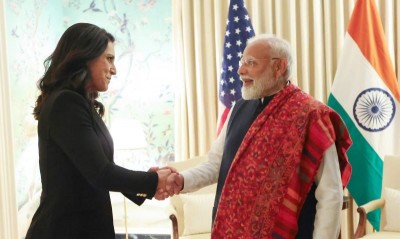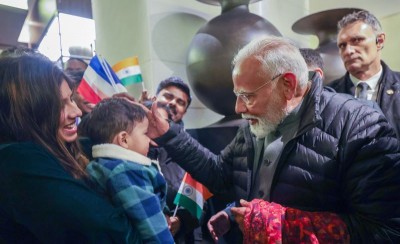 Violence Against Women
Violence Against Women
The Spiralling Crime Graph: A Wake-Up Call to End Violence Against Women
On this International Day for the Elimination of Violence Against Women, let's step back and look at eleven years of statistics, 2011–2021, which indicate a ninefold, or 87.3 percent, increase in violence against women. According to the annual data released by the National Crime Record Bureau in the past eleven years, the highest percentage of crimes against women reported in 2021 rose by 15.3 per cent.
Unfortunately, nearly one-third of Indian women have been victims of physical or sexual violence as per the National Family Health Survey (NFHS-5) report which shows that violence has now become fashionable and criminals were no longer afraid of punishment, despite the strict enforcement of laws and regulations.
There lacks a strict implementation policy in the existing laws. Before the situation worsens, it is essential to end violence against women through immediate action and stringent legislation, such as strict and timely punishment for the offenders and enforcing strict laws in schools and educational institutes to inculcate modules about the negative consequences of violence against women and to teach women safety skills.
A big question arises, where will women feel safe? Women are worshipped as goddesses in Indian culture, but some societal elements have destroyed women's lives by suppressing their respect. Violence against women and girls is the most common human rights violation in the world; every 11 minutes, a woman or a girl is killed by an intimate partner or family member, as reported by the UN chief. It may happen at home, where friends, family members, or the husband target women, or at work, where co-workers, managers or bosses target her.
Escalating Crimes against Women

The National crime record Bureau Report, 2021 stated that crime against women cases in the last 11 years has increased by 2,28,649 cases to 4,28,278 cases. On an average, there is a 5.6 percent annual increase in crimes against women. Data from 2020 and 2021 show contradictory results, in 2020, the highest reported crime cases were down by 8.3 percent, while in 2021, reported crime cases were up by 15.3 percent respectively. In 2019–2020, the number of cases dropped from 405326 to 371503, but in 2020-2021, it again rose from 371503 to 428278.
Pandemic Leads to Spike in Violence Against Women
The pandemic debilitated not just people's financial status but also women's mental and physical health. In 2020–21, the National Commission for Women received 26,513 domestic-violence complaints from women, a 25.09 percent increase from the previous year's total of 20,309 complaints. All are aware that the COVID lockdown has aggravated mental health and in the same period, suicide data shows that the majority of female suicide victims are housewives, which is 23,179 out of 45,026; the same accounts for 51.5 percent of all female victims in 2021. According to the report, the proportion of female suicide victims was higher for marriage-related concerns such as dowry-related problems, impotence, and infertility. Furthermore, according to the UN Women published report 2021, 25% of women surveyed felt less safe at home since the pandemic started.
2017-2021 Data under the Indian Penal Code (IPC)

The number of reported cases of crime against women has fluctuated dramatically over the last five years. The largest percentage of offences have been reported in the last five years in 2021 under the categories of "Cruelty by Husband or His Relatives" by 31.8 per cent and "Assault on Women with Intent to Outrage Her Modesty" by 20.8 per cent.
Moreover, many crimes go unreported and are not recorded as crimes for a variety of reasons, including impunity, silence, stigma and shame surrounding it; even if women raise their voices, they are often suppressed as a result of social pressure; and which women suffer silently throughout every stage of their lives.
The Heinous of All

The graph depicts rape statistics from 2021, when 31677 rape cases were reported, with 4155 repeat rapes on the same woman. A terrible image raises a question: how would the accused have the guts to rape the same woman again if the existing law had intervened quickly?
The rise in crimes committed against women reflects the fact that the Indian government now appears to be failing to protect women from violence. Multiple cases similar to "Nirbhaya Kand" occur frequently, such as the sorrowful case of a 39-year-old woman who was sexually assaulted and kidnapped, the horrifying occurrence of "Chhawala gang-rape," and similarly, the case of the two Dalit girls who were hanging out on trees after being gang-raped.
Strong Implementation and Timely Punishment
The punishments are too less for such a heinous offence, hence, it has failed to deter the crime. The cases of rape in India are rising every day at a time when the strong on-the-ground implementation of laws is required. The government must strictly and timely punish offenders to decrease violence against women.
Raising Awareness to Root out Violence against Women and Girls
Root reasons for the risk of gender-based violence include harmful social and gender norms, unequal power dynamics, low levels of education, poverty, and conflicts. To root out violence against women and girls, awareness is highly required among children, families, and society.
Include interventions at parent-teacher meetings (PTM) in school that seek to promote general parenting knowledge, behaviour, or skills regarding effective parenting techniques and methods for managing a child's behaviour. In addition, they inform parents about their children's rights and help them build healthier and more conformable relationships with their children.
It is critical to raise awareness among young or school-age children about the crucial role of women in the world and the negative consequences of violence against women by inculcating a few modules in the school curriculum for all students.
Additionally, a mandatory class for girls in schools to teach them about safety skills such as Judo, Karate, and so on, or how to protect themselves in any situation.
Role of the Society and Family to Prevent Violence
In a patriarchal Indian society, men believe that they could control women by hitting them, and women who are suffering this way may consider the same. Many people rely on their beliefs in patriarchy for their values, morals, and points of view. Meanwhile, society and families can play a crucial role in helping to prevent violence against women. People who commit violence against women should not be tolerated in society or in their families. By having a nonviolent character, a man can play a significant role in protecting a woman from violence.
In recognition of the International Day for the Elimination of Violence Against Women on November 25, 2022, this year's campaign, UNITE! Activism to End Violence Against Women & Girls, aims to mobilise society as a whole to become activists for the prevention of violence against women by supporting these initiatives, including parents, families, and all other key stakeholders in longer-term rehabilitation, and break the intergenerational cycles of violence for children now and in coming generations.
.jpg) (The author works for CUTS International, a global public policy research and advocacy organisation. The view expressed in the article is of the writer.)
(The author works for CUTS International, a global public policy research and advocacy organisation. The view expressed in the article is of the writer.)
Support Our Journalism
We cannot do without you.. your contribution supports unbiased journalism
IBNS is not driven by any ism- not wokeism, not racism, not skewed secularism, not hyper right-wing or left liberal ideals, nor by any hardline religious beliefs or hyper nationalism. We want to serve you good old objective news, as they are. We do not judge or preach. We let people decide for themselves. We only try to present factual and well-sourced news.








